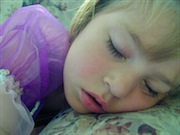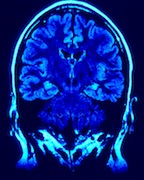March 2010Narcolepsy: A correct diagnosis, a normal life
Home » Narcolepsy: A correct diagnosis, a normal life

It seemed to be a cold or, at worst, the flu. Elisabeth*, a once very active and high energetic eleven year old girl, began to feel tired all the time. Her mother Linda waited for the characteristic fever that accompanies colds and influenzas but nothing came. Around the same time, Elisabeth complained that she would fall down each time she laughed. Falling while laughing? Linda thought her daughter was being a bit “silly” and did not push the matter any further. But then day by day things seemed to get out of control. Elisabeth would come home from school with a hole in her trousers because she fell; the perfect ‘A’ student complained of difficulties concentrating and participating in class, even falling asleep in the middle of the day.
Her mother Linda recalls: “It was around this time that I first witnessed her cataplexy. When I saw her fall, I knew immediately that there was something wrong, so I took her to the emergency room of a local hospital. I told them that what I thought I had seen was a seizure. They gave her an MRI and tested her but sent her home with a perfect bill of health. They suggested I take her to a neurologist. I conferred with her paediatrician and then took her to the neurologist. She examined her and assured us it was not neurological. My paediatrician then suggested a cardiologist. We took her to a cardiologist and he diagnosed her with Vasal Vagal irregularity. He suggested lots of water and increasing salt in her diet. We did that for a month and returned. By then I was witnessing cataplexy in her neck and mouth. He suggested we take her back to a neurologist. I immediately took her to a different neurologist and after 30 minutes he diagnosed her with narcolepsy and cataplexy. He suggested immediate treatment with Ritalin©.”

Narcolepsy is an uncommon disease in children, characterised mainly by excessive and/or sudden sleepiness. Cataplexy, often considered as one the first symptoms of Narcolepsy, is a sudden, brief loss of muscle control triggered by stress or a strong emotion, such as laughter, anger, anxiety, or surprise (explaining Elisabeth’s “falling while laughing” episodes). Cataplexy may be mild – like a brief feeling of weakness in the knees – or may be as severe as a complete collapse. The exact cause of the disorder is still not known. Narcolepsy is thought to be related to a disruption in an area of the brain that controls sleep and wakefulness. In some cases, it is thought to be due to a lack of a chemical in the brain called hypocretin.
Narcolepsy is a cautionary example of the difference that correct diagnosis, information and support can make. The first symptoms of the disorder, which are excessive sleepiness and difficulties of concentrating, can be mistaken for laziness or an attitude problem, especially in a teenager. Thanks to the support of her family, Elisabeth, now 13, has managed to keep a pretty normal schedule. She takes medication to help control the sleepiness she experiences throughout the day and the cataplexy that she gets in her legs, neck and mouth. She tires more easily than before but her mother says that she is still very popular at school, and athletic too.
Mailing list for Narcolepsy
The mailing list is an email communication method for a group of people involved with a particular disease. A message posted by one of the subscribers is received by all the others; each person is free to respond either to all subscribers, or only to the sender. If you are interested in joining the mailing list on Narcolepsy please send an email to
narcolepsy-subscribe@eurordis.medicalistes.org
*Names have been changed at the family’s request.
This article was first published in the April 2010 issue of the EURORDIS newsletter
 Online Communities For Rare Disease Patients Online Communities For Rare Disease Patients
|
Author: Nathacha Appanah
Photo credits: © EURORDIS & nEuroped
 Narcolepsy is an uncommon disease in children, characterised mainly by excessive and/or sudden sleepiness. Cataplexy, often considered as one the first symptoms of Narcolepsy, is a sudden, brief loss of muscle control triggered by stress or a strong emotion, such as laughter, anger, anxiety, or surprise (explaining Elisabeth’s “falling while laughing” episodes). Cataplexy may be mild – like a brief feeling of weakness in the knees – or may be as severe as a complete collapse. The exact cause of the disorder is still not known. Narcolepsy is thought to be related to a disruption in an area of the brain that controls sleep and wakefulness. In some cases, it is thought to be due to a lack of a chemical in the brain called hypocretin.
Narcolepsy is an uncommon disease in children, characterised mainly by excessive and/or sudden sleepiness. Cataplexy, often considered as one the first symptoms of Narcolepsy, is a sudden, brief loss of muscle control triggered by stress or a strong emotion, such as laughter, anger, anxiety, or surprise (explaining Elisabeth’s “falling while laughing” episodes). Cataplexy may be mild – like a brief feeling of weakness in the knees – or may be as severe as a complete collapse. The exact cause of the disorder is still not known. Narcolepsy is thought to be related to a disruption in an area of the brain that controls sleep and wakefulness. In some cases, it is thought to be due to a lack of a chemical in the brain called hypocretin.
 Online Communities For Rare Disease Patients
Online Communities For Rare Disease Patients